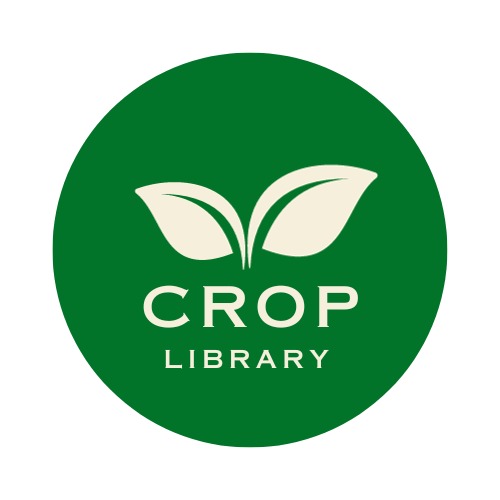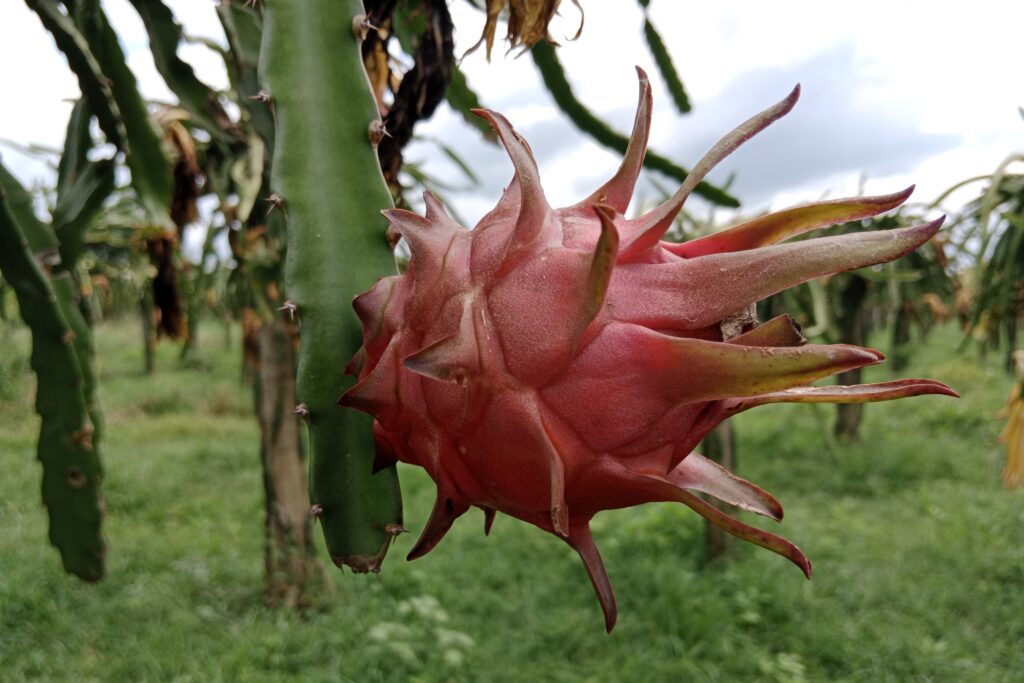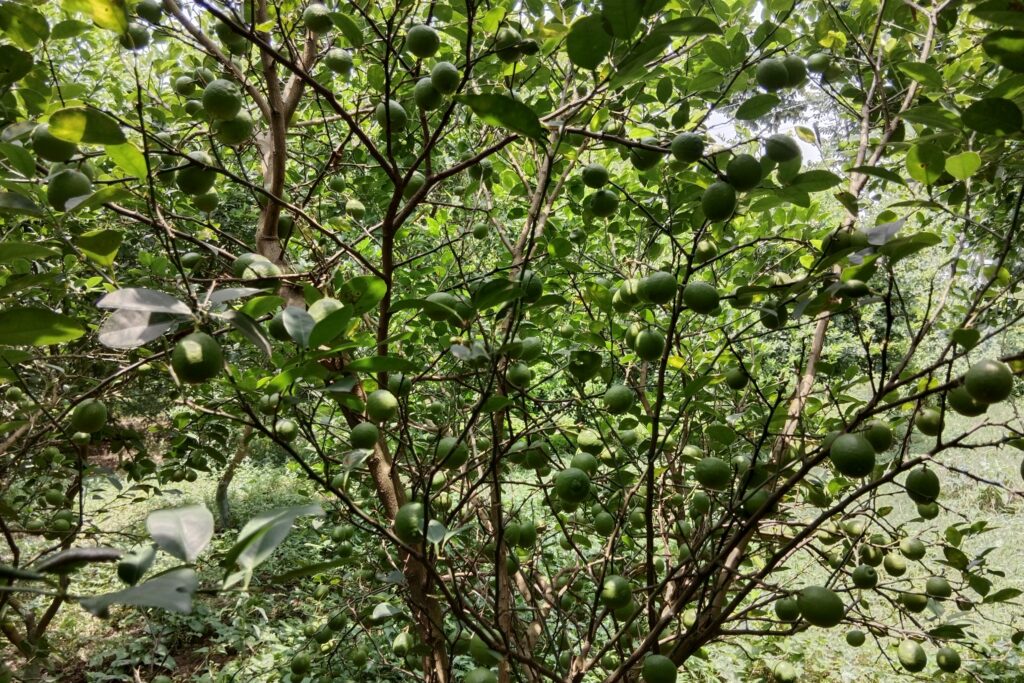Pigeon Pea Farming
With a total income of NRs. 150,000 per acre and a total expenditure of NRs. 40,000, pigeon pea farming has significant economic potential, according to the profit analysis, which results in a net profit of NRs. 110,000. This indicates the great economic sustainability of pigeon pea farming profit per acre, translating to a profit margin of almost 73.33%. The requirement for efficient resource management to maximize profitability and maintain successful pigeon pea production is highlighted by the fact that major cost components, such as land preparation, irrigation, and fertilizers, account for 62.5% of total expenses.

Land Preparation
The land preparation process begins with initial deep plowing to a depth of 8-10 inches, ideally conducted immediately after the previous harvest or during summer well before sowing, using a moldboard plow or tractor-drawn implement; this crucial step exposes soil pests, incorporates crop residues, and significantly improves soil aeration.
Following plowing, the field undergoes 2-3 cross-harrowings to effectively break down large soil clods and level the surface. Subsequently, a plank or leveler is employed for further clod crushing and leveling, achieving a fine, crumbly soil structure and an even surface essential for planting.
In rainfed areas, specific moisture conservation practices like forming broad beds and furrows or ridges are integrated during this stage to enhance water retention. Finally, thorough field sanitation is performed, removing weeds, volunteer plants, and debris to minimize the carryover of pests and diseases into the new crop cycle.
Soil Type
Because of its deep taproot system, which allows it to reach subsoil nutrients and moisture, pigeon peas can grow in sandy loams, clay loams, and fairly poor soils, but they do best in well-drained, fertile loamy soils with good organic matter. It prefers slightly acidic to neutral environments and can thrive in a pH range of 5.0 to 7.0; saline/alkaline or extremely acidic (pH < 5) soils are not suited. Since soggy circumstances seriously harm roots and encourage infections, proper drainage is essential.
Climatic Requirements
Pigeon pea is a warm-season crop requiring consistent warm temperatures, with an optimal range of 25°C to 35°C (77°F to 95°F), and soil temperatures above 20°C (68°F) for germination. It is highly sensitive to frost at all growth stages.

Ideal rainfall ranges from 600-1000 mm (24-40 inches) and should be well-distributed, although the crop’s deep roots provide excellent drought tolerance, making it suitable for semi-arid and rainfed regions.
Adequate moisture is particularly critical during germination, flowering, and pod filling, as prolonged drought during these stages significantly reduces yield. Pigeon pea requires full sunlight, and most traditional cultivars are day-length sensitive, thriving in short days for flowering, while newer medium-duration and determinate varieties show less sensitivity.
Major Cultivars
Based on the maturity period, pigeon pea cultivars are categorized into the following:
| Category / Duration | Key Characteristics | Example Varieties |
| Extra-Early/Early | 100-120 days maturity | ICPL 87, ICPL 151 (Jagriti), TAT 10, Pusa Arhar 16 (Fytaz 16), Asha (ICPL 87119) |
| Medium | 140-180 days maturity | ICPL 332 (Waris), BDN 2, Pusa 9, CO 6, CO 7, CO 8, Maruti (ICPL 85063) |
| Late | 180-280+ days maturity; traditionally perennial | Less common for pure grain; traditional perennial types |
Seed Rate
To achieve good yields, use a seed rate of 6 kg per acre and ensure the selection of healthy, bold seeds for sowing. Treat the seeds with Carbendazim or Thiram at 2 g per kg of seed, followed by treatment with Trichoderma viride at 4 g per kg or Pseudomonas fluorescens at 10 g per kg of seed to enhance disease resistance and promote healthy growth.
Planting
a) Planting Season
| Season Type | Planting Period | Conditions & Regional Suitability | Primary Use |
| Kharif/Rainy Season | June-July | Sown with monsoon rains | Primary season for grain production |
| Rabi/Post-Rainy Season | Sept-Oct. | Relies on residual soil moisture or supplemental irrigation; requires mild/winter-free regions | Areas with frost-free winters |
*Timing varies regionally based on local monsoon patterns
b) Spacing
Maintain spacing of 50 cm between rows and 25 cm between plants to ensure proper growth.
c) Planting Method
The predominant planting method for pigeon pea is direct seeding, where seeds are sown 3-5 cm deep using a seed drill for efficiency and precision, or by dropping seeds into furrows opened by a plow and covering them. Broadcasting, followed by light plowing or harrowing to cover seeds, is less uniform and requires a higher seed rate. Transplanting is occasionally practiced for vegetable pigeon pea or in regions with short rainy seasons, involving the raising of seedlings in nursery beds for 3-4 weeks before planting.
d) Number of Plants per Acre
An acre accommodates approximately 32,376 pigeon pea plants.
Intercropping
Pigeon pea is highly suitable for intercropping due to its slow initial growth, tall stature, and nitrogen-fixing ability. It is commonly intercropped with short-duration crops planted between its rows, including cereals like pearl millet, sorghum, and maize (during early stages); pulses such as mung bean, urd bean, and cowpea; oilseeds like sesame and groundnut; and vegetables such as onion, chillies, and okra, particularly with vegetable pigeon pea.
Irrigation
| Irrigation Type | Critical Stages | Application Guidelines | Methods | Water Requirements & Notes |
| Rainfed | Flowering, Pod filling | Relies on monsoon rains | Natural rainfall | Supplemental irrigation is needed during dry spells at critical stages |
| Irrigated | All stages 1. Germination/Seedling 2. Flowering 3. Pod development & filling | • Irrigate based on soil moisture monitoring • Frequency varies by soil/weather • Avoid waterlogging | Furrow irrigation | • Total water: 350–500 mm (rainfall + irrigation) • Soil moisture trigger: Irrigate when <50% available moisture • Post-pod setting: Reduce irrigation to prevent excessive vegetative growth |
Fertilizer and Manure
Fertilizer application should be guided by soil test results; however, the following represents a general recommended dosage.
| Application Timing | Input Type | Recommendation per Acre | Purpose & Notes |
| Organic Manure | Farmyard Manure (FYM)/Compost | 4–6 tonnes | Incorporate during land prep; improves soil structure & nutrient retention |
| Basal Dose (At Sowing) | |||
| · Biofertilizers | Seed Inoculants | Rhizobium (strain-specific) + PSB | Fixes atmospheric N; solubilizes soil P → Reduces N/P fertilizer needs by 25–40% |
| · Chemical Fertilizers | Phosphorus (P) | 25–35 kg P₂O₅ (or 150–200 kg SSP) | Critical for root/flower development. |
| Potassium (K) | 20–25 kg K₂O (or 35–45 kg MOP) | Apply only if soil test indicates deficiency | |
| Nitrogen (N) | 6 kg N (13 kg Urea) | Minimal starter dose – Avoid excess N (promotes foliage, reduces pods) |
Weed Control
Weed control is critical during the first 60 days after sowing due to the crop’s slow initial growth. Primary methods include pre-emergence herbicide application followed by mechanical interventions: Immediately after sowing (within 2 days), apply Pendimethalin @ 1.0–1.2 kg active ingredient/acre (or 1 L formulation/acre in 150–200 L water) or Fluchloralin @ 0.9–1.0 kg ai/acre before weed emergence, followed by light irrigation/rain to activate the herbicide.
Supplement this with two hoeings:
- First hoeing at ~3 weeks (20–25 DAS)
- Second hoeing at ~6 weeks (40–45 DAS).
Pest and Disease Management
Common Pests
a) Pod Borer
The Pod Borer (Helicoverpa armigera) is pigeon pea’s most devastating pest, capable of causing up to 75% yield loss through skeletonization of leaves and feeding on flowers/green pods, where it creates circular holes to consume grains. For control: Install pheromone traps (4-5/acre) to monitor populations.
Under low infestation, handpick grown-up larvae. At early stages, apply HaNPV (250–500 LE/acre) or neem extract (50g/L water). If infestation exceeds Economic Threshold Level (ETL: ≥2 early-instar larvae/plant or 5–8 eggs/plant), spray Indoxacarb 14.5SC @ 200ml/acre or Spinosad 45SC @ 60ml/acre in 100–125L water using a knapsack sprayer, strictly during evening hours to maximize efficacy and minimize non-target impacts.

b). Pod Fly
Pod fly infestations occur when maggots feed on developing seeds, causing significant damage to the crop and reducing yield quality. Effective management strategies include timely sowing to avoid peak pest periods, maintaining field sanitation by removing and destroying infested pods, and applying Spinosad spray to control the pest population and protect the developing seeds. Regular monitoring of the crop is also essential for early detection and effective management.
c). Plume Moth
The plume moth is a pest whose larvae cause damage by feeding on the flowers, buds, and pods of the crop, leading to reduced flower set, lower pod development, and ultimately diminished yields. Effective management involves the use of Neem Seed Kernel Extract (NSKE), which acts as a natural insecticide to deter larvae, along with the application of Spinosad, a targeted pesticide known for its efficacy against lepidopteran pests. Regular crop monitoring and timely interventions are critical to minimizing the impact of this pest.
d). Stem Fly
The stem fly is a destructive pest whose maggots burrow into the stems, disrupting the vascular system and causing wilting, stunted growth, and even plant death. Effective management involves treating seeds with Imidacloprid before sowing, which provides systemic protection against early infestations.
Early sowing helps the crop establish before the peak activity of stem flies, reducing their impact. Additionally, removing and destroying affected plants prevents the spread of the pest, ensuring healthier crop growth and minimizing yield losses. Regular monitoring of the field is essential for timely detection and intervention.
Common Diseases
a) Fusarium Wilt
Wilt disease, which affects plants at both the seedling and later growth stages, can result in large crop losses. Drooping petioles and a drab green plant hue are early signs, which develop into straw-colored and fading leaves.
Grow resistant types to control wilt, and when the infection is at its worst, apply a mixture of 1 kilogram of Trichoderma and 200 kg of well-decomposed cow dung to the afflicted area after letting it sit for three days. To effectively control wilt, apply 300 milliliters of propiconazole diluted with 200 liters of water per acre.
b) Sterility Mosaic Disease
Sterility Mosaic Disease (SMD), caused by the eriophyid mite (Aceria cajani) transmitting Pigeon Pea Sterility Mosaic Virus (PPSMV), results in stunted growth, pale green chlorotic leaves, excessive bushiness, and severely reduced or absent flowering/pod formation.
Effective management requires planting resistant varieties (e.g., ICPL 7035, TAT 10) combined with chemical control: spray Fenazaquin 10% EC @ 300 ml/acre in 200 liters of water using a knapsack sprayer, ensuring thorough coverage (especially leaf undersides) at 30–40 Days After Sowing (DAS) in endemic areas, repeating every 15 days if mite pressure persists. Integrate with rogueing infected plants and avoiding late sowing for sustainable prevention.
c) Phytophthora Blight
Phytophthora stem blight can cause young seedlings to die shortly after emergence if it occurs at the seedling stage. It manifests as brown or black necrotic lesions on the stem and circular or irregular lesions on leaflets, eventually leading to blighted foliage. To control the disease, spray with a solution of Metalaxyl 8% + Mancozeb 64% at 2 g per liter of water upon observing an infestation.
d) Cercospora Leaf Spot
Greyish brown to dark spots appear on the undersides of leaves, and in severe cases, the spots spread to petioles and stems, often accompanied by leaf drop. To control this disease, use disease-free seeds and treat them with Captan or Thiram at 3 g per kg of seed before sowing.
Harvesting
Pigeon Pea Harvesting depends on the variety and purpose. For grain, harvest when 75-80% of pods turn brown and seeds rattle (180-250 days for medium/late varieties), avoiding shattering. For vegetables, pick green pods when seeds are soft (70-100 DAS), with multiple pickings every 3-5 days. Manual harvesting involves cutting or uprooting plants, bundling, and drying for 5-7 days, while mechanical harvesting suits large fields and determinate varieties, requiring uniform maturity and dry conditions.
Post-Harvest
Post-harvest processing includes manual threshing by beating dried plants or mechanical threshing with pedal-operated or power-driven machines. Seeds are sun-dried to 10-12% moisture, cleaned via winnowing or seed cleaners, and stored in cool, dry conditions using treated gunny bags or hermetic structures to prevent bruchid infestation, with fumigation as needed.
Yield
Pigeon pea yields range from 800-1200 kg per acre for traditional varieties under average management when grown for grain, while vegetable varieties produce 2000-4000 kg per acre of green pods, depending on the variety and number of pickings. Pigeon pea yields range from 800-1200 kg per acre for traditional varieties under average management when grown for grain, while vegetable varieties produce 2000-4000 kg per acre of green pods, depending on the variety and number of pickings.
Cost of Investment per acre for Pigeon pea farming
| S.N. | Categories | Cost of Investment (NRs.) |
| 1 | Land Preparation (plowing) | 10,000 |
| 2 | Seed per acre | 2,000 |
| 3 | Seed Sowing | 1,000 |
| 4 | Fertilizers and Manure | 7,000 |
| 5 | Irrigation | 8,000 |
| 6 | Weed Control (pre & post-emergence) | 1,000 |
| 7 | Pest & Disease Control | 3,000 |
| 8 | Harvesting | 5,000 |
| 9 | Miscellaneous Costs | 3,000 |
| Total Cost | 40,000 |
Income from Pigeon pea farming
| Particulars | Estimated Yield/acre (kg) | Market Price (NRs./kg) | Total Income (NRs.) |
| Pigeon Pea Yield | 1,000 | 150 | 150,000 |
Analysis of Pigeon farming profit per acre
The profit analysis for pigeon pea farming reveals a total income of NRs. 150,000 against a total cost of NRs. 40,000, resulting in a net profit of NRs. 110,000 and a profit margin of approximately 73.33%, highlighting its high economic viability. Major cost contributors include land preparation, irrigation, and fertilizers, which account for 62.5% of the total investment, emphasizing the importance of efficient resource management for maximizing profitability.


